Process, People and Workflow
The content creation process
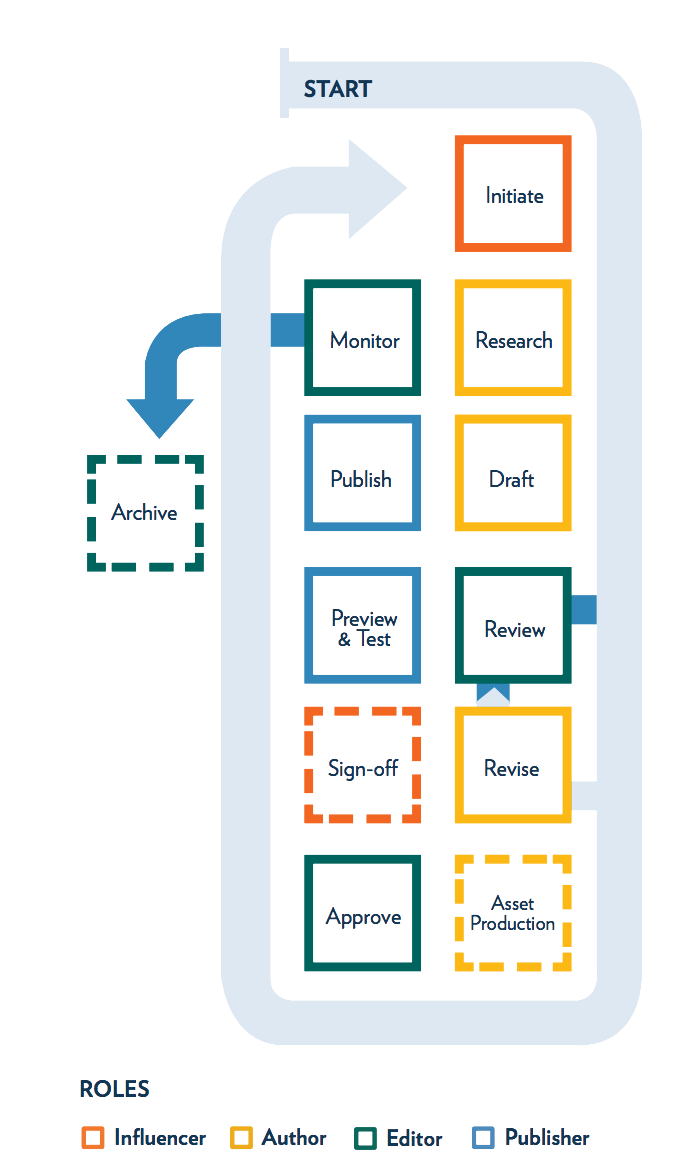 There are 12 distinct tasks in the content creation process. Let’s take a look at
each one.
There are 12 distinct tasks in the content creation process. Let’s take a look at
each one.
Initiate
Identify a need for new or updated content and provide direction.
Research
Gather everything needed to create the content.
Draft
Craft the content.
Review
Carefully read the draft to offer feedback and catch any errors.
Revise
Make any recommended changes.
Asset production
(if necessary): Collect, request or produce any required nontext content, such as graphics, illustrations, animations, photos, or videos.
Approve
Double-check the finished content, correct any lingering errors and declare it ready for publication.
Sign-off
(if necessary): Get the blessing of any other parties that may need to see content before it goes live.
Preview & test
Make sure the content is formatted properly and that everything works as expected on both desktop and mobile devices.
Publish
Post the content to the site for everyone to see.
Monitor
Keep an eye on the content after it has been published to make sure it’s doing what it’s supposed to. Are people finding it and using it? Is it still relevant, or does it need to be updated? Are there ways to make it better? Use what you learn to initiate changes. The content creation process is cyclical— not linear.
Archive
Even the best content has a shelf life. If it sits too long, it starts to feel stale, and stale content erodes trust. Redundant, outdated or trivial content needs to be archived or deleted to make sure that users are not confused or distracted.
Team member roles
Content creation is a collaborative process. To spread out the work that needs to get done, we’ve grouped related tasks into roles. In certain situations, individuals may be given multiple roles. Also, multiple people may sometimes share aspects of a role within the process.
There are four primary roles:
- Influencer: Tasks related to initiating and consulting
- Author: Tasks related to creating
- Editor: Tasks related to guiding and checking
- Publisher: Tasks related to final checks and gatekeeping
- Influencer
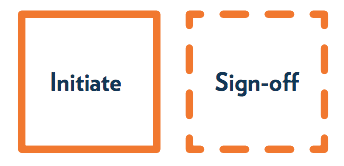 Influencers get the process started. They include any people or parties who must (e.g.,
the Registrar) or should (e.g., subject matter experts) have a voice in what gets
written and published for a particular area, and they may be brought in by Authors
and Editors to consult or sign-off on content as needed. Keep in mind that, for any
piece of content, the Influencers that initiate and the Influencers that sign off
may be different people.
Influencers get the process started. They include any people or parties who must (e.g.,
the Registrar) or should (e.g., subject matter experts) have a voice in what gets
written and published for a particular area, and they may be brought in by Authors
and Editors to consult or sign-off on content as needed. Keep in mind that, for any
piece of content, the Influencers that initiate and the Influencers that sign off
may be different people.- Author
 Authors execute the requests and assignments of Influencers and Editors to produce
content that aligns with established strategies and guidelines. Certain Authors may
also gather, request or produce non-text content, such as illustrations or videos.
Sometimes one Author may be responsible for writing while another handles asset production.
Authors collaborate and consult with various Influencers while researching, drafting
and revising content, and they work closely with Editors for approval. When writing,
Authors think about who needs to know about a content project, who would benefit by
knowing and who could help if they knew—and invite those Influencers to the table.
Authors execute the requests and assignments of Influencers and Editors to produce
content that aligns with established strategies and guidelines. Certain Authors may
also gather, request or produce non-text content, such as illustrations or videos.
Sometimes one Author may be responsible for writing while another handles asset production.
Authors collaborate and consult with various Influencers while researching, drafting
and revising content, and they work closely with Editors for approval. When writing,
Authors think about who needs to know about a content project, who would benefit by
knowing and who could help if they knew—and invite those Influencers to the table. - Editor
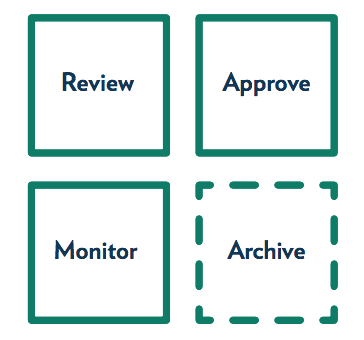 Editors lead, own and approve the content within a particular area and make sure the
necessary work is done, done well, done on schedule and performing as expected. Editors
work closely with Authors to provide direction, catch errors and hold them accountable
to established strategies and guidelines.
Editors lead, own and approve the content within a particular area and make sure the
necessary work is done, done well, done on schedule and performing as expected. Editors
work closely with Authors to provide direction, catch errors and hold them accountable
to established strategies and guidelines.- Publisher
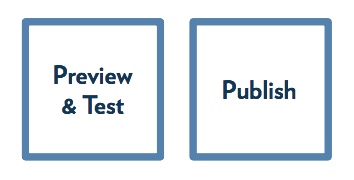 Fluent in established strategies and guidelines, Publishers preview, proofread and
test to ensure that content is acceptable before it’s published to the live site.
Fluent in established strategies and guidelines, Publishers preview, proofread and
test to ensure that content is acceptable before it’s published to the live site.
Editorial workflows
An editorial workflow describes the way people use a process to get things done. The workflow you use will vary slightly depending on your department, the people on your team, and the roles and tasks you’ve been given.
There are four major workflow patterns:
- Two-person workflow with an Influencer and an Author/Editor/Publisher
- Three-person workflow with an Influencer, an Author/Editor and a Publisher
- Three-person workflow with an Influencer, an Author and an Editor/Publisher
- Four-person workflow with an Influencer, an Author, an Editor and a Publisher
- TWO-PERSON WORKFLOW WITH TASKS SPLIT BETWEEN AN INFLUENCER AND AN AUTHOR/EDITOR/PUBLISHER
-
This workflow gives editing and publishing tasks to the Author, allowing for high publication speed. Ideal for tightly-controlled or frequently updated content (e.g., the home page, key landing pages) or content that requires little oversight (e.g., certain inner subpages, person entries). Most effective when the Author is an exceptionally good writer intimately familiar with these guidelines (and isn’t overburdened) and/or the content is less critical.
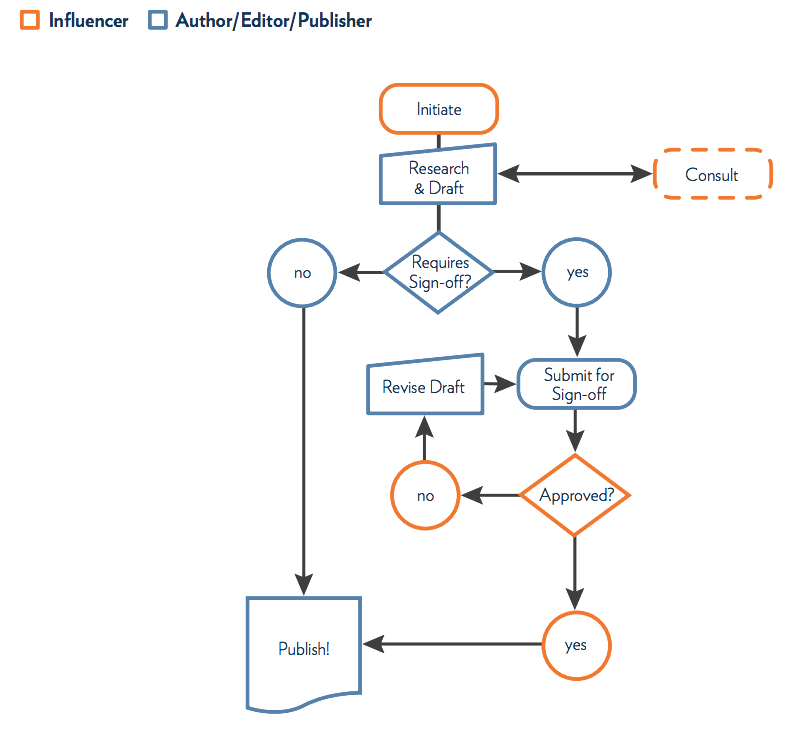
- THREE-PERSON WORKFLOW WITH TASKS SPLIT BETWEEN AN INFLUENCER, AN AUTHOR/EDITOR AND A PUBLISHER
-
This workflow gives editing tasks to the Author, allowing for moderate publication speed. Ideal for independently governed content sections or pages that require a final check before going live (e.g., a high-profile office). Most effective when the Author is highly trained or when content naturally requires minimal editing.
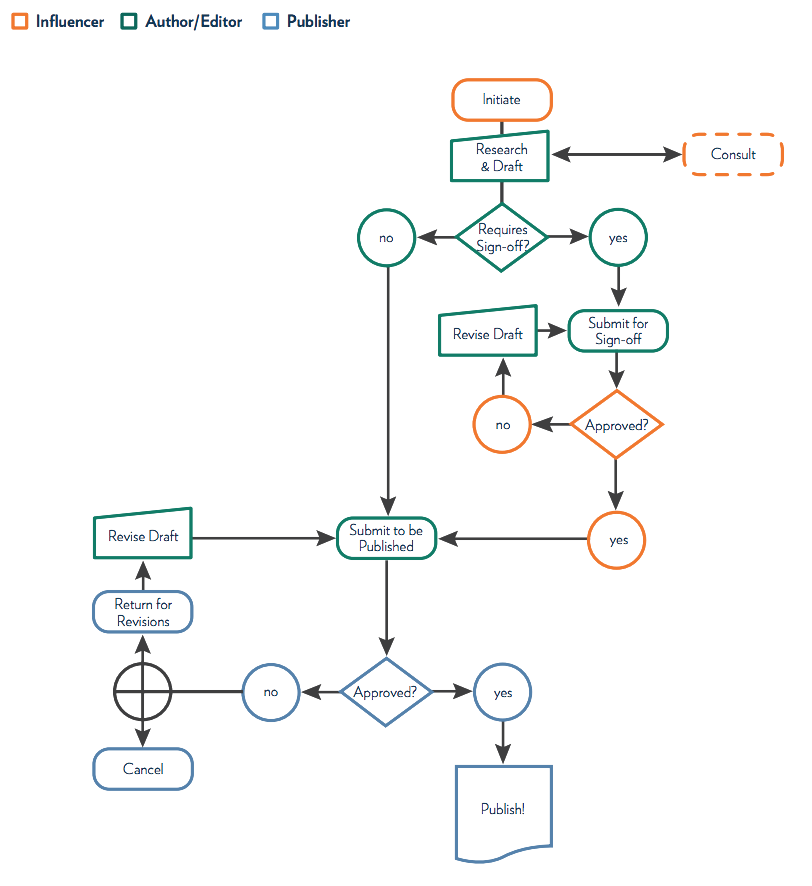
- THREE-PERSON WORKFLOW WITH TASKS SPLIT BETWEEN AN INFLUENCER, AN AUTHOR AND AN EDITOR/PUBLISHER
-
This workflow gives editing tasks to the Publisher, allowing for moderate publication speed. Ideal for independently governed content sections or pages that do not require additional oversight (e.g., an office or department blog). Most effective when an Author’s work is likely to require less editing or the Publisher has ample time to edit submitted drafts.
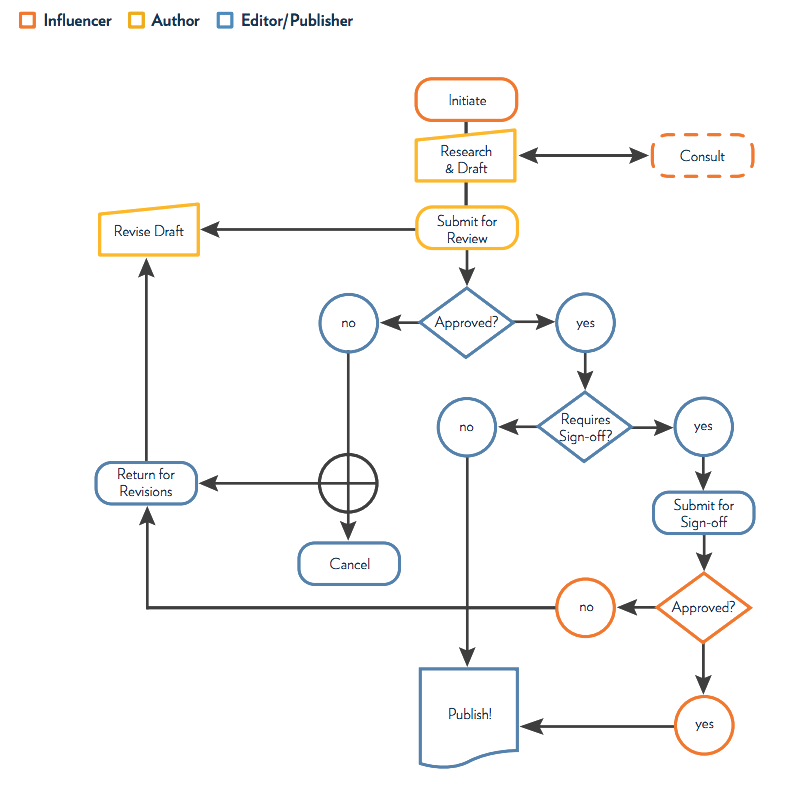
- FOUR-PERSON WORKFLOW WITH TASKS SPLIT BETWEEN AN INFLUENCER, AN AUTHOR, AN EDITOR AND A PUBLISHER
-
With separate individuals in each role, it’s the most thorough process, but also the slowest. Ideal for content that requires careful planning (e.g., Why Hope), content that doesn’t change often (e.g., the About section), or large sections that require greater distribution of responsibility (e.g., Campus Life, Academics).
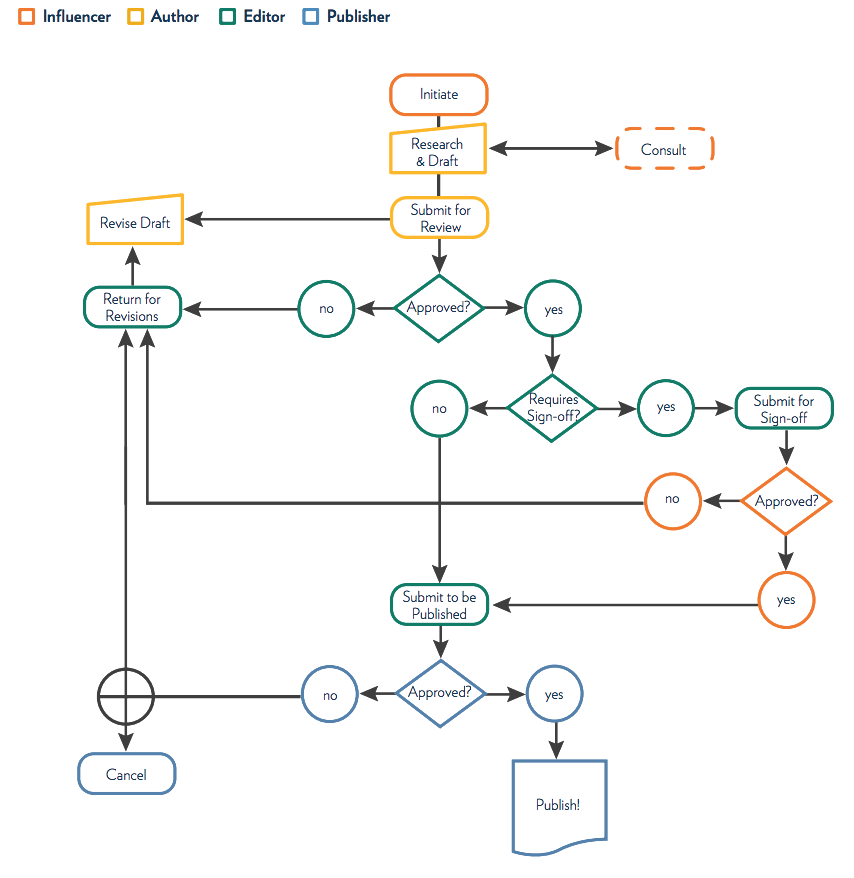
Anderson-Werkman Center100 East 8th StreetSuite 110Holland, MI 49423
workP. 616.395.7860
marketing@hope.edu